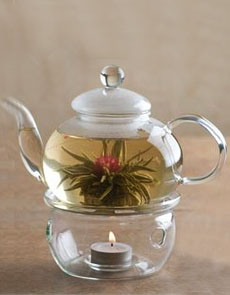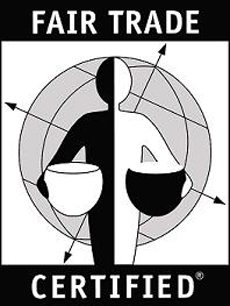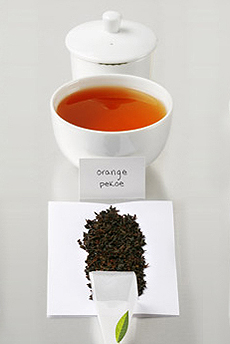
 Some people think of display tea as gourmet tea. But while the tea is fine, the finest teas are not used to make display teas—they are more of a novelty. Photo courtesy DavidsonsTea.com. Some people think of display tea as gourmet tea. But while the tea is fine, the finest teas are not used to make display teas—they are more of a novelty. Photo courtesy DavidsonsTea.com.
March 2005
Last Updated March 2012
|
 |
Gourmet Tea: Types Of Tea & Tea Terminology
Tea Glossary Page 5: Terms With F
This is Page 5 of a 15-page glossary of tea and gourmet tea terms. Click on the links below to visit other pages. This Tea Glossary is one of our many food glossaries.
Click on a letter to go to the appropriate glossary page:
a b c d e f g h i j k l m n o p q r s t u v w x y z
This glossary is protected by copyright and cannot be reproduced in whole or part.
FAIR TRADE CERTIFIED
Fair trade certification allows farmers to receive higher prices than they would in the conventional market. It means that the farmers were paid a fair price for their product and were not exploited by middlemen who pay them less than their crop is worth. See a longer discussion of Fair Trade Certification.
FERMENTATION
The process of oxidizing green tea leaves to make black and oolong teas (green tea and white tea are not fermented). The green leaves are spread out and exposed to the air for three to four hours. During this chemical process, the leaves turn red-brown. This gives fermented tea its dark appearance. Fully oxidized (fermented) leaves become black tea; partially oxidized (semi-fermented) leaves produce oolong tea.
|
|

Fair Trade Certified logo. |
FINISHING
The final step of tea leaf preparation. After steaming (or panning) and rolling, tea leaves are selected by shape (separation of kuki-cha and kona-cha happens at this step). If desired for the particular type of tea, the shaped leaves can be roasted in quick-fire, which gives a caramelized scent or hiire-ka (“roast scent”). Finally, the leaves are blended with other teas to create the reliable flavor that one expects from the variety.
FIRED
Dried.
FIRING
The process of rapidly heating the leaf, either with hot air or in a wok, to quickly halt fermentation and dry the leaf to its final product.
FIRST FLUSH
See flush, below.
FLAT
Soft, flabby-bodied tea lacking bite and briskness; not fresh. Tea tends to lose its astringency, briskness and taste with age.
FLOWERY
A term used in grading the size of tea, it refers to a leaf style with more of the lighter-colored tips.
FLOWERY ORANGE PEKOE
The highest grade of black tea, often abbreviated FOP. The term flowery refers to the leaf bud. Actual tea flowers are not used in the preparation of tea. (Photo at right.)
|
|

Orange pekoe tea. Photo courtesy TeaForte.com. |
FLUSH
The picking cycle of the leaves. Some teas, especially oolongs, are harvested in cycles, usually four times a year. The first and second flushes are generally considered to be the highest grades. The term also can refer to the freshly-picked tea leaves, typically comprising the bud and first two leaves of the growing tea shoot.
FRUITY
A piquant quality characteristic of good oolongs and some keemuns. Not meant to be descriptive of fruit teas.
FUKAMUSHI SENCHA
Japanese for “deep-steam green tea,” it is steamed longer than regular sencha. Regular sencha is steamed for 30 to 40 seconds, but deep-steamed (fukamushi) sencha can be steamed for up to 120 seconds. The longer steaming gives the tea its signature crumbly texture and dark green, opaque liquor compared to the golden yellow color of regular sencha. It also has a milder flavor profile. Fukamushi Reserve can also be found, which is less astringent tea.
FULL
Strong tea without good color and without bitterness.
|
|

Organic sencha tea is available at MightLeaf.com. |
Continue To Page 6: Tea Terms Beginning With G
Go To The Alphabet Index Above
Lifestyle Direct, Inc. All rights reserved. Images are the copyright of their respective owners.

|







